Reviewing the “History” of Team Yankee – Part One: Introduction
August 28, 2017 by oriskany
Good afternoon, Beasts of War. Since mid-August, Battlefront has been running a worldwide campaign for Team Yankee, their World War III alternate history wargame. Since Beasts of War is collaborating on this project, it’s high time we gear up our armies, refresh ourselves on the rules, and prepare to fight this greatest war that never was.
Perhaps now is also a fitting time to look at the “history” of Team Yankee. How did the “story” of Team Yankee get started? How might such a war have really gone? What did the source material get right? What did it get wrong? What IS the source material, anyway? There’s a mountain of misconception out there, so let’s get started.
Throughout the course of this project, I’ll be assisted by Ben Collins (Beasts of War: @benc). I met Ben during the Team Yankee Bootcamp in November 2015, just one of many service veterans attending the event (I think about a third of us at that boot camp had served in our nations’ militaries at one time or another).
During the boot camp and the writing that followed, Ben demonstrated a deep knowledge of how the armies that faced each other along the IntraGerman border in the 1980s were actually put together. With 20+ years in the service, one could expect no less. So when he asked if he could help with this project, I was happy to accept.
Our purpose isn’t to deflate anyone’s national pride, nor make ironclad predictions, and certainly not “poke holes” in the Team Yankee wargame. The game remains admirably faithful to source material, but that source material has some issues. In summary, we’re just trying to shed some light and inspire discussion on this fascinating topic.
NATO vs. Warsaw Pact, Mid-1980s
BenC’s Commentary:
During the 1980s, the world was broadly split between two competing political, social, and economic ideologies for roughly 40 years. Since the end of the Second World War, and the defeat of National Socialist Germany, the Soviet Union had expanded her sphere of influence to include Eastern Europe.
The Allies sought to limit the expansion of Communism into Western Europe through a programme of rebuilding and investment under the Marshall Plan, interestingly in which the UK was the biggest recipient of this foreign aid. Yet governments in East and West began to regard each other with suspicion, and the Iron Curtain, famously paraphrased by Churchill, was soon drawn across the European continent.
The divided Germany eventually coalesced into two separate states, one rebuilt in the image of the capitalist West, the other modelled on the Communist East. Despite numerous global flashpoints (such as the Cuban missile crisis), and proxy wars being fought, Germany remained the expected future battleground.
The 1980s represents the period in which both sides were as evenly matched as they had been throughout the Cold War. They were balanced not only in terms of conventional forces, but also in strategic nuclear weapons. Therefore NATO, and the US in particular, could no longer rely on nuclear superiority to deter the Warsaw Pact from aggression in Europe.
With nuclear war now unthinkable for both sides, the weight of deterrence fell onto the conventional forces of both NATO and the Warsaw Pact. It’s worth highlighting that the 1980s also represent possibly the most dangerous decade of the Cold War because of the comparative parity of conventional forces in Germany at that time.
Hawkish leaders on both sides may have considered that if war was to start then their best chance of winning was right then.
The Context of Team Yankee
Oriskany Checks the Background:
The wargame “Team Yankee” is of course based on the 1987 novel “Team Yankee” by Harold Coyle. In the novel, an American tank and mechanized infantry company (commanded by Captain Sean Bannon) finds itself on the front lines of a theoretical World War III in West Germany, trying to hold back waves of Soviet invaders.
This novel is typically regarded as a “gold-standard” authority on the subject, mostly because of Coyle was a US Army major serving in tanks. And indeed, his depiction on how an American “team” (temporary mixed-arms company) is accurate down to some of the smallest possible details.
Coyle, however, did not “world-build” his own World War III. In his forward, he freely admits that he’s set his novel in the World War III setting written over ten years prior, Sir John Hackett’s “The Third World War: August 1985.” This is the actual “setting” for the Team Yankee wargame, especially if you’re playing Germans, British, or Soviets.
This is a phenomenal book, written as a “history” as if the Third World War had really just happened. Whereas Team Yankee gives us the “tank turret” view” of company level officers and individual soldiers, Hackett shows us the whole war, and not just in Europe.
Having served as both commander of the British Army of the Rhine and NORTHAG (Northern Army Group), Sir John Hackett naturally presents his war from a place of peerless authority. The problem is that The Third World War (TTWW) was published in 1978, and so was probably written in 1975-77, when 1985 was still the “dark future.”
Accordingly, Hackett (and NATO) were making some guesses about what the NATO-Warsaw situation would look like in 8-10 years. Given his qualifications and background, these would be some of the best guesses possible, but they were still guesses … and thus not 100% accurate. In fact, Hackett would revise his work in the 1980s.
Yet these “guesses” would be carried forward into Harold Coyle’s Team Yankee novel, and therefore the Team Yankee wargame (along with other Team Yankee-based games published since 1989). Please note that we’re NOT trying to “knock” the Team Yankee wargame here, the game gets full marks for fidelity to its source material.
We just have to acknowledge that this source material doesn’t exactly line up with the situation that would have unfolded had war broken out in 1985. And we’re not talking about vague, high-level “interesting background” here, but material differences that would be reflected on a 15mm Team Yankee table top.
BenC Adds his Perspective:
As Oriskany has said, Team Yankee is based on the Harold Coyle novel of the same name. There is no doubt that Coyle was writing from a position of authority and experience as he had been a serving armour officer in the US Army. The book is full of the details that really enhance that turret level view of the Cold War gone hot.
That’s my problem with the Team Yankee novel, however. It is written by a US Army officer who is the product of a training system that, obviously, maintains that the US training, equipment and tactics are far superior to those of the Warsaw Pact. This gives Coyle an embedded bias in his writing when dealing with the Soviets.
In general the Soviets in the novel Team Yankee are portrayed as ill-disciplined, under-trained and tactically unaware. In the engagements described in the book the Soviets seem to be easily awed by US firepower. While Coyle openly portrays Team Yankee as a “lucky unit,” the enemy often seems to patiently await their turn to die.
As mentioned above, the Team Yankee novel (and thus game) is actually based on The Third World War by General Sir John Hackett. In writing this book, Hackett is making the case that NATO needs strong conventional forces to firstly maintain the conventional deterrence.
Secondly, he maintains that a conventional war that has a limited release of tactical nuclear weapons on the battlefield may not necessarily result in the use of strategic nuclear weapons. In my opinion that was a very dangerous notion to spread both in military and political circles.
Hackett’s novel builds global tension from friction in the Persian Gulf through to an escalation and eventual confrontation between NATO and the Warsaw Pact. In researching the novel Hackett consulted with numerous military and political experts to build a convincing and realistic picture of a conflict in 1985.
In subsequent years, Hackett has been criticised for painting too rosy a picture for the NATO forces as it seems all of the bad luck falls on the Soviets; the West seem not to suffer from bad decisions or unexpected setbacks.
What Does “Team Yankee” Even Mean?
Oriskany Clears His Throat
Take one look at the cover of the Team Yankee rule book, where Soviet bullets are literally bouncing off the word “Freedom” painted on an American tank turret, and it’s easy to misinterpret what the phrase “Team Yankee” is about. The rule book summaries what “Team Yankee actually means, but let’s take a moment for more detail.
American army units are built into battalions and regiments. In peacetime, for purposes of maintenance, training, and administration, it’s far better to keep mechanized infantry and tank forces strictly organized in their own battalions. In combat, however, these units have to be mixed in order to execute any kind of combined-arms tactics.
Therefore, for field manoeuvres (and war, had it ever come to that), each American tank company would swap one platoon with one mechanized infantry platoon. Then, each tank battalion would also swap one of these modified tank-heavy companies for a mech-heavy company, and so on. Thus, all units would get a combined-arms capability.
Technically speaking, these modified “companies” were no longer companies. They were now called “Teams.” Also, these modified “battalions” are now called Task Forces, not unlike the roughly battalion-sized “kampfgruppe” the Germans used so well in World War II.
Mechanized infantry-heavy teams would be designated by the first four letters of the radio-phonetic alphabet – Alpha, Bravo, Charlie, and Delta. Tank-heavy teams would use the last four letters: Teams Whiskey, X-Ray, Yankee, and Zulu. Task Forces would usually be given some kind of a code name or named after its commander.
We’re Just Getting Started
Believe me, we’re just getting started here. Upcoming articles in this series will cover how the potential battlefield of 1985 actually differed from what was projected in the TTWW source material, American and Soviet doctrine, the British Army of the Rhine, the Bundeswehr, the Dutch, and the possible intervention of Italians and French.
We’ll also be looking at other World War III books you can use as an “expanded universe” for your Team Yankee games, such as Chieftains, Red Storm Rising, and my personal favourite: Red Army. Some of these are great reference material, some others not so much.
We hope you’ve enjoyed this first part of our article series on Team Yankee. We’ll be continuing to shine a sceptical spotlight on some commonly-held beliefs and presumptions that may be floating around out there, so by all means add your own perspective! Questions, comments, debates, all are welcome below!
If you liked this article and want to know more about the history behind Team Yankee, make sure to check out the Weekender Interview with oriskany below...
Click On The Image and you'll be taken directly to the segment in the show to learn more.
If you would like to write an article for Beasts of War then please contact us at [email protected] for more information!
Supported by (Turn Off)
Supported by (Turn Off)
"80s Hype"
Supported by (Turn Off)































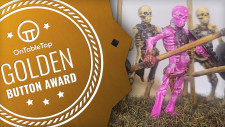
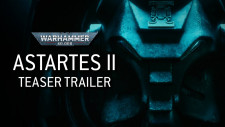


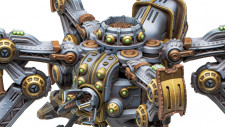





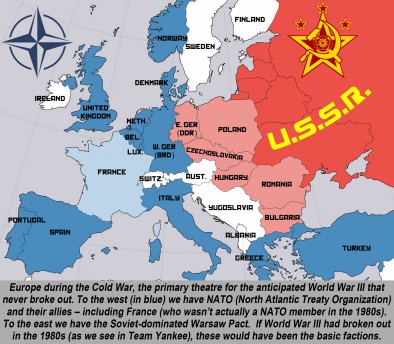
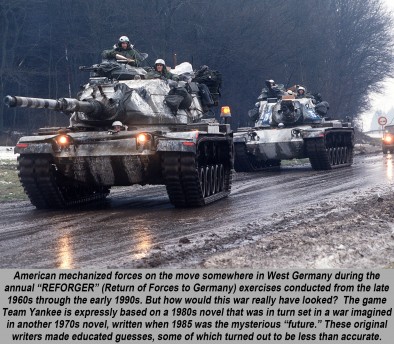
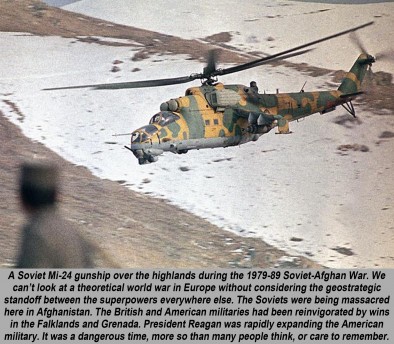

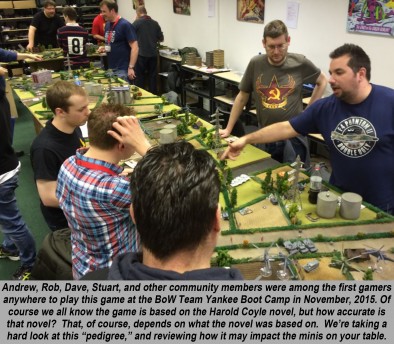

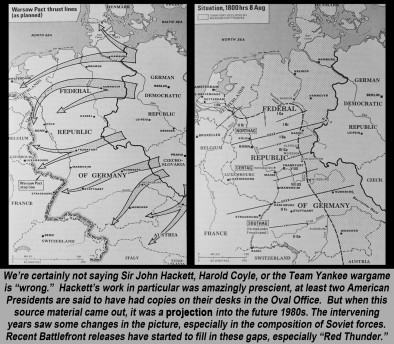
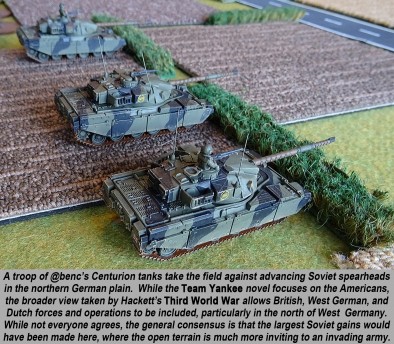

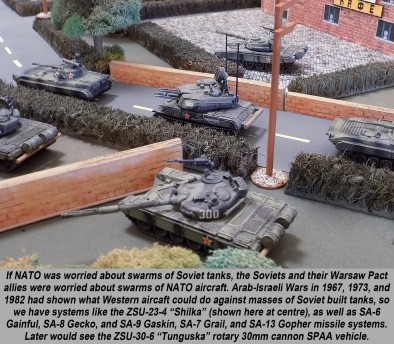
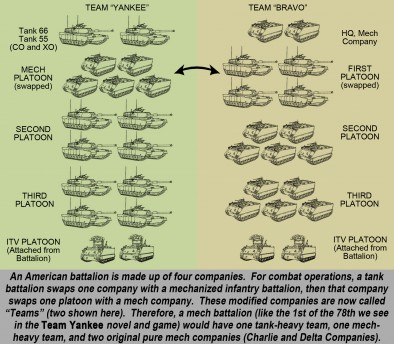
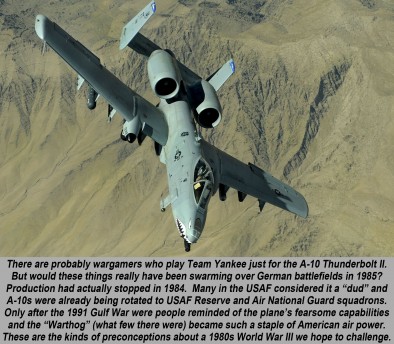
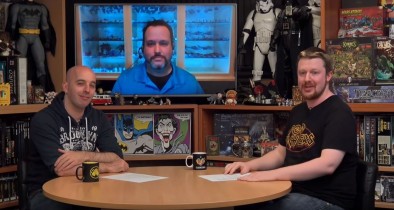


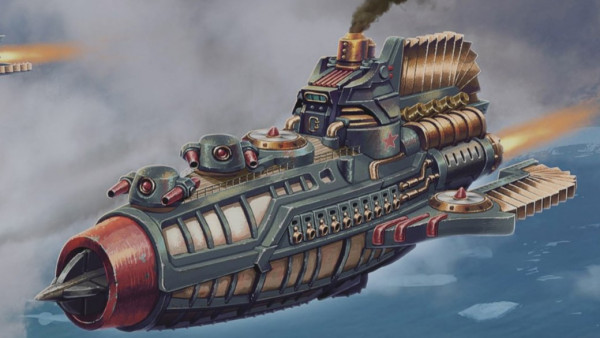
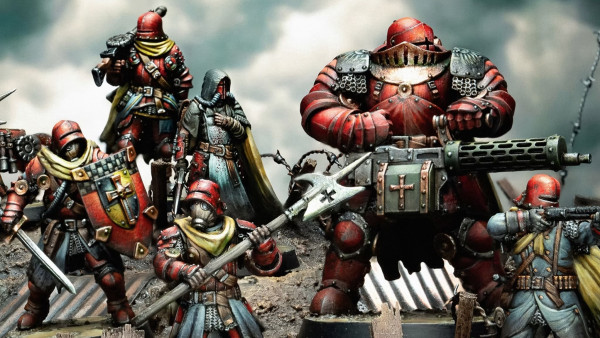
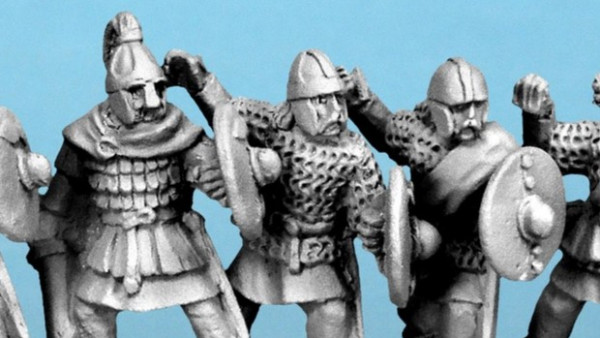
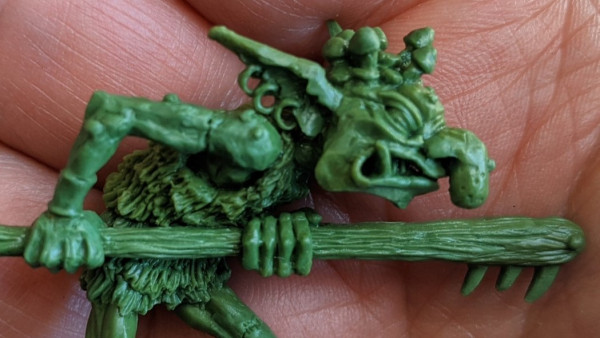
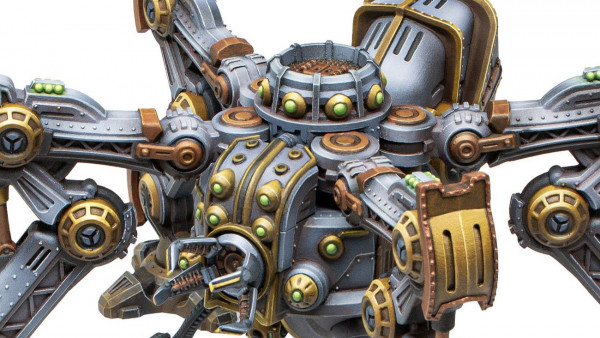
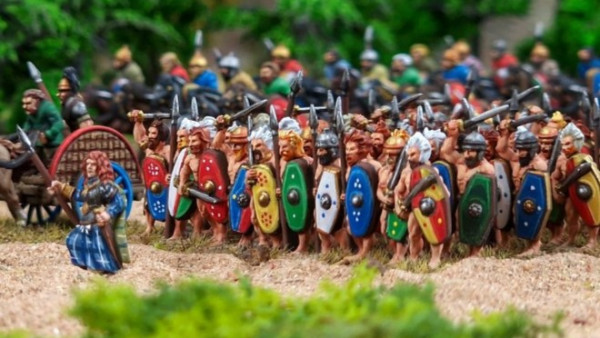

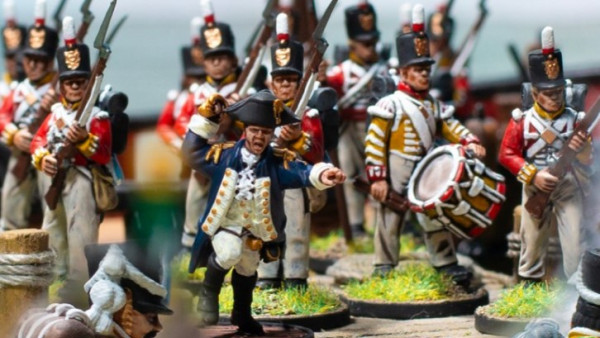

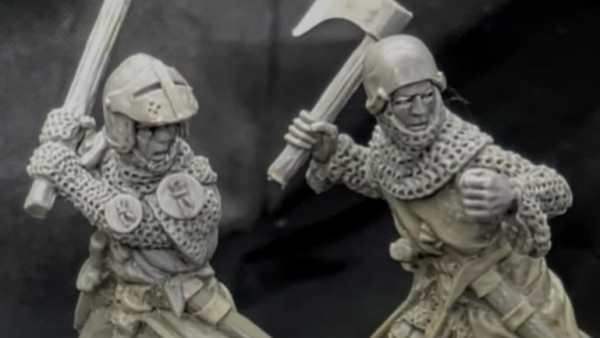
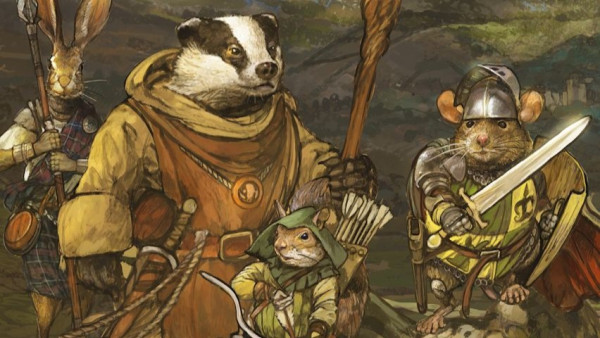
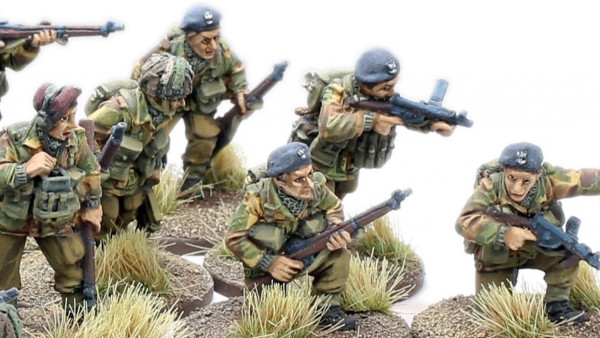
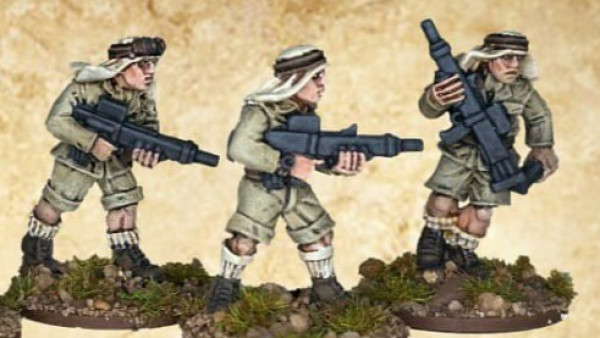
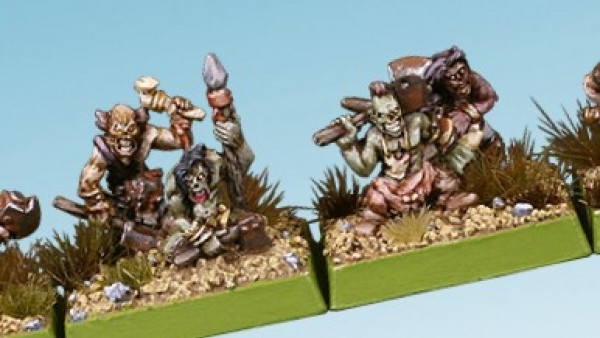
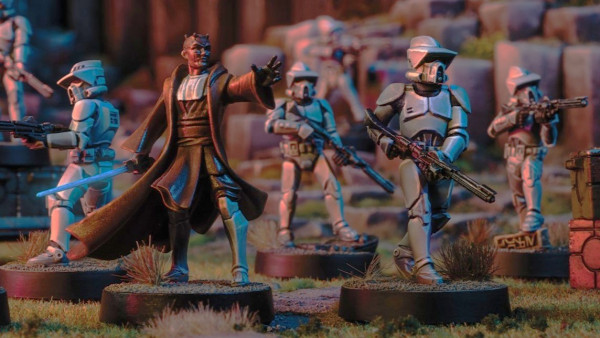
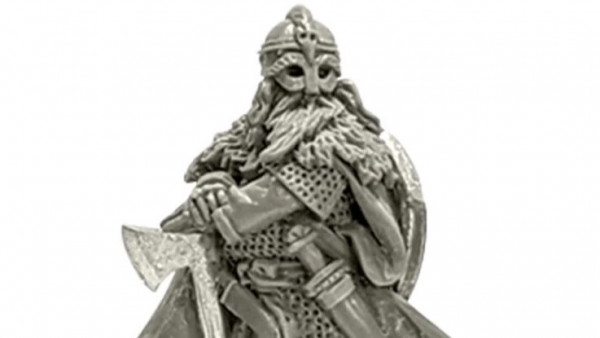
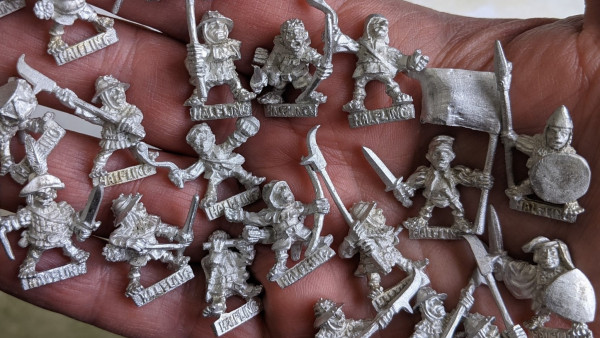

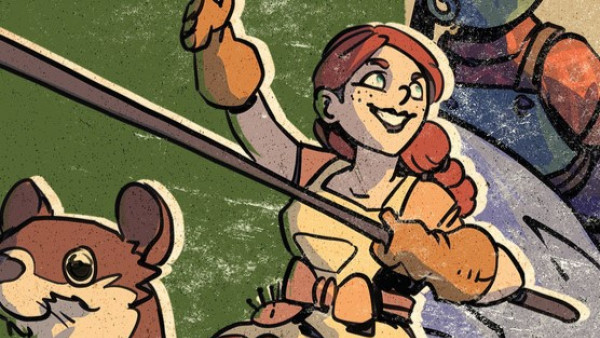
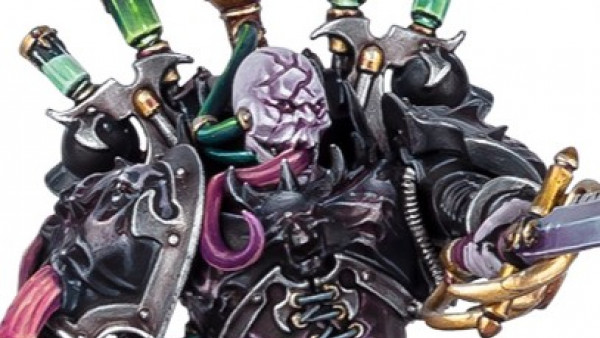
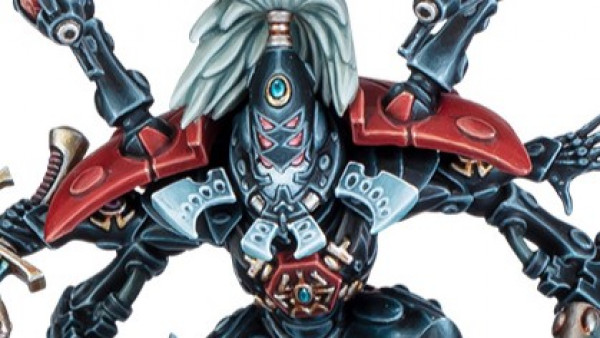
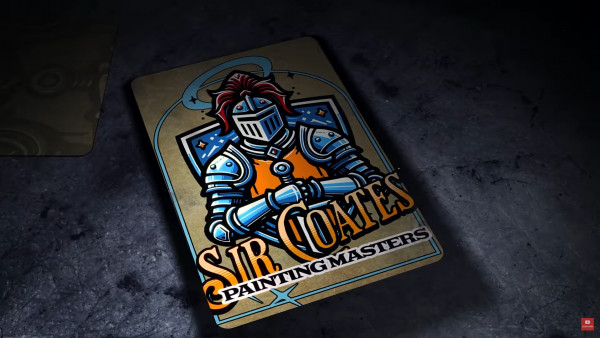
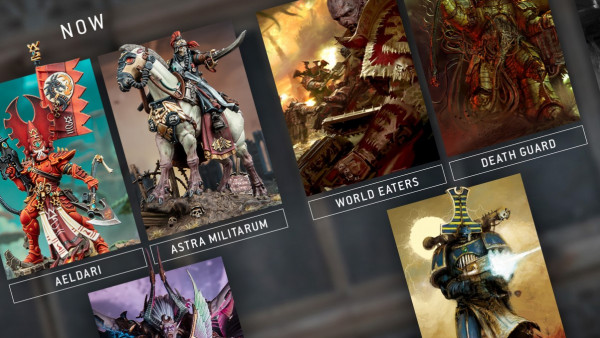
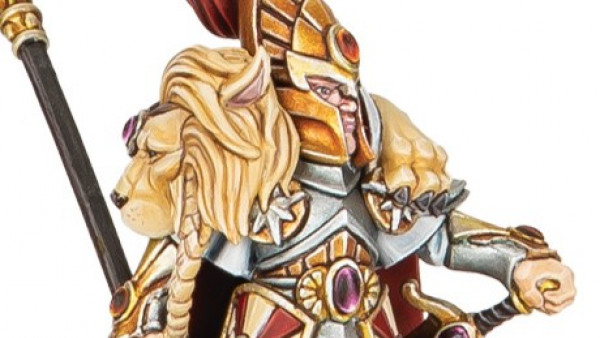

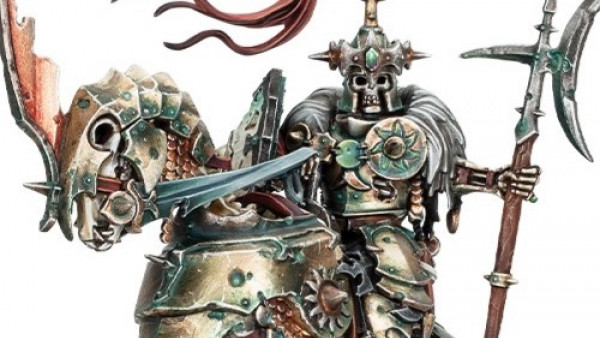
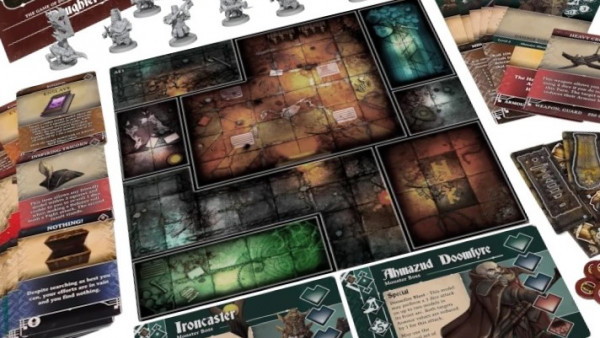



a period/game I know practically nothing about so I’m looking forward to seeing the rest of the series.
Also nice to see you’ve found an ally there @oriskany, is he hard to work for @benc?
Hey, @benc volunteered! So I have no regrets! (Quietly puts the cat-o-nine-tails back in the bottom desk drawer). 😀 In all seriousness, though, we had an aggressive timeline on this one and Ben was great at submitting writing on-time and on-target. 😀
that surprises me, it’s not like @Warzan would drop an aggressively tight deadline on you 😉
Ah, it’s all good. He knows I like it. 😀 😀 😀
Looking forward to this series @oriskany. I never read Team Yankee the novel but I did read Red Storm Rising as a kid (I still have the dog-eared copy somewhere) and played the Harpoon naval wargame which was developed alongside(?) (I remember there being links between the two but whch way around escapes me.).
I’m sure the articles will be interesting and thought provoking and I hope the collab goes well for you both.
Thanks, @stoney997 – Yes, Red Storm Rising, was we know, was written by Tom Clancy, his second novel I believe. His first was co-authored with Larry Bond, who is a big-time wargame designer (Harpoon, Command at Sea series, etc). Clancy has also credited Larry Bond as a co-author of Red Storm Rising (even if the publisher did not). That’s the connection there. So you’ve played Harpoon? The computer or “tabletop” version? I say “tabletop” even though to play it any kind of scale … well, I have LITERALLY played it on a tennis court (and even that was only with… Read more »
Wasn’t there a game Red Storm Rising? I think I remember playing it.
Red Storm Rising by TSR is touched on in Part 05 – along with GDW’s original “Team Yankee” wargame published in 1989/1990.
We should really start playing that Red Storm Rising board game again. It’s a solid game, and every time I take it out to photograph it, I say to myself how we should start playing again. I still have all the components and the board remains in great shape. 😀
And Microprose had a Red Storm Raising computer game, Submarine Simulation with a small strategic side to it. I wasted a few days looking at sonar profiles comparing them to the ones in the manual. … remember the dread that was the Kiev, and playing cat and mouse with Alpha subs
Thanks, @rasmus – The Red Storm Rising Microprose game is briefly mentioned in one of these articles, when we look at some of the other games that have tackled this genre and period.
Damn, Alpha class subs? The fastest and deepest-diving subs in the world at the time, if memory serves,
speaking of computer games :
– M1A1 Tank platoon (Microprose) : classic ‘red’ vs ‘blue’ (Soviets)
– Operation Flashpoint (Bohemia Interactive). it is set on an island, but the gear is from the ’80’s.
Awesome, @limburger – if we’re talking computer games, myself and I assume @cpauls1 still recommend Steel Panthers: MBT by Shrapnel Games.
http://www.shrapnelgames.com/Camo_Workshop/MBT/MBT_page.html
Anything from 1946-2020 can be played at the battalion-regiment-brigade level.
Really looking forward to reading these articles – I’ve always found the 80’s cold war period really interesting and recently got into the game having read the Team Yankee book.
I’d also endorse the British equivalent to Team Yankee – Chieftains by Bob Forrest-Webb which provides a similar field commander’s view from a British armoured regiment.
Thanks. @shart1979 – Indeed, we totally include Chieftains in our review of 1980s WW3 fiction and source material. Look for discussion on Chieftains in future parts of this article series. The book was recommended to me by the Tank God himself, @johnlyons . 😀
Well Mr Lyons has excellent taste 🙂
Having seen some of the other comments I’m really looking forward to seeing some of the articles that discuss some of the discrepancies around the Russian Guards & their T-64s plus the whole autoloader discussion is one that still rumbles on now as how do you game a situation where the crews would get tired or have access to ready racks.
Can’t wait for the next articles!
@shart1979 – T-64s for life! 😀 When I heard that (a) T-64s are being included in Red Thunder expansions and (b) they are measurably BETTER than T-72s in the game I breathed a huge sigh of relief. Massive improvement for the Team Yankee game in terms of realism and reflecting OOBs and ToEs in actual GSFG “Cat One” Tank Divisions.
There’s a lot more on this to come in future parts. Trust me, we get stuck into this. 😀
Thanks for this. I finally got some people at least a little interested in the game at the FLGS, and these articles will be good background reading.
No problem, @erion ! We actually hoped to get it started a little sooner when Firestorm: Red Thunder first kicked off. But then the Dunkirk article series dropped in, and there are only so many hours in the day! 😀 Glad you liked the article series so far and hope you will continue to find it useful.
A very interesting read. You have obliquely referenced one of my biggest problems with Team Yankee, and I would like a more expert view on this point in future articles, namely the characterisation of the Red Army. Now I don’t doubt the Red Army placed a big emphasis on combat numbers in their combat doctrines, but it appears that Battlefront are determined to reduce Warsaw Pact players into playing Hollywood hordes rather than anything else. Rather than tactical nuance we get BMP spam, rather than careful what if lists for comparative forces we are given elite goodies and redshirt mook… Read more »
@mythickhan – Thanks for the great comment. >> You have obliquely referenced one of my biggest problems with Team Yankee, and I would like a more expert view on this point in future articles, namely the characterisation of the Red Army. We definitely come back to this in much more detail in future parts of this article series (every Monday – five parts in all). Technically, the “Red Army of Workers and Peasants” (RKKA) hasn’t existed since 1947, but @benc and I focus more on the GSFG (Group of Soviet Forces in Germany), and even this in turn doesn’t include… Read more »
Please don’t underestimate fatigue. My (manual) Loader showed first signs of exhaustion after the first three rounds on the shooting range (Leopard 1A5). An auto loader does not suffer from that. An auto loader (in mid 1980s) has no (at least minor) problems with rough terrain. A human loader (at least in a Leopard Tank) can be thrown around very easy when on the move.
So even though I was gunner in a West German tank I would prefer the auto loader in the Soviet tanks.
Oh, absolutely, @setesch . I’ve handled even the L7 105mm rounds, I understand the Rh-120 rounds (US M256 / M356 built under license) are like 55 pounds (25 kilos). As far as overall crew fatigue goes, I would again put the disadvantage on the Soviets. I’ve actually tried to squeeze into a T-55 brought back from the Gulf War. Even when I was back in shape I couldn’t really do it. T-72s are even smaller regarding internal space. The point of the autoloader is a space / cost saving measure. Also the rule for the Soviet tank arm is that… Read more »
I can’t speak for the Soviets but my Football (soccer) coach was a Commander in a T-72… and he is taller than me (about 6’1″). So maybe it’s not that big issue once you are inside.
I only know German built tanks from the inside and both Leopards are quite comfy. When you are not the Commander. Commanders have to have short legs otherwise the back of the gunners seat threatens your shinbone.
That’s odd, @setesch – maybe I’ve been misinformed. Like I said, I’ve personally seen the T-55s, etc, but never the T-72s. I’ve seen youtube videos of their interior and they look extremely tight. But it’s hard to really tell on camera. Maaaaaybe T-72s are built with more room since they were primarily an export tank, and so other nations may not have been built to specifications of the Soviet Army? I’m totally guessing on that one. I’ll have to do some more fact checking. I’ve just heard and read that Soviet tank crewmen have to be pretty small in stature… Read more »
Thanks for the reply 🙂 I do think Battlefront have taken *some* steps but I still think the overall approach is ham-fisted. Especially with the continued lack of T-80 tanks or recent combat veterans from Afghanistan. Perhaps they could do something like the Hero lists they released for Late War in Flames of War 3rd Edition… at least people would appreciate the option. Now, I’m no expert on this but I was going by what I had read about the auto-loaders the T-72 model has a minimum cycle of 6.5 seconds (ATGM 8 seconds) and a maximum cycle of 15… Read more »
I would agree with your overall position, @mythickhan – again, I’m a Soviet player myself, and readers on the site who know me know that my writing has always been pretty even-handed with the Soviets / Russians, from World War II going forward. And as far as World War III novels and “how it might have gone” – my favorite is still the one told entirely from the Soviet perspective. The loading cycles I happened to run across literally just last night reading about T-80s. Granted the source may not have been the best. But it’s pretty much common knowledge… Read more »
I look forward to reading subsequent articles in the series! And I shall definitely check out “Red Army”, my thanks for the recommendation.
I shall see you on the barricades when we fight for T-80s 😛
All the best @oriskany 😀
@mythickhan – indeed, if you’re looking for someone who does the Soviet Army “justice” – without being condescending or anything (they are portrayed warts and all), definitely Red Army is the one. Even leaving aside this new perspective, as a fiction writer myself all I can say is that Ralph Peters is master. His characters, his metaphors, his ensemble storylines … all are done with masterful grace. The way that war would develop, the amount of time it would take, the materiel and human losses on both sides, he gets it much closer than other novelists (although in truth his… Read more »
I remember reading when the wall came down Soviet plans for warfare in Europe came to light. Again I m going back in time quite a bit so might be a little be off but the gist of the article was that the Soviet plan was to fire lots of battlefield nukes into West Germany before the tanks began to roll
I was in USMC boot camp when the Wall came down.
Agree 100% about the tactical nukes, @torros – Declassified CIA docs and even some Soviet planning maps we include in future parts of this article series actually show planned tac nuke strikes clearly marked on some of West Germany’s north sea ports. Presumably this was to seal off possibility of rapid commitment of reserves from the US and UK.
If I remember right, 7 Days to the Rhine, the 1979 Warsaw Pact simulation while on the face of it had Nato nuking Poland trying to wipe out the weaponry and material before the Warsaw Pact went into the offensive was a politically correct sticking plaster over what was in effect a Soviet offensive plan – nuke the northern cities of Amsterdam, Esbjerg and Hamburg to slow the supply of reinforcements but exclude the UK and France as targets to try and prevent the deployment of yet more nuclear arms in the theatre. Race to the Rhine, reunify Germany. Loads… Read more »
Thanks so much, @bigdave , and yes, I agree just about everything you say in your post! 😀 Seven Days to the Rhine – sounds about right. In “Red Army” Ralph Peters has the war last 2 1/2 – 3 days, and Soviet spearheads are about halfway there (at least in the north) – and then the war ends for other reasons. Nukes along the North Sea – Emden, Bremen, Bremershaven, Wilhelmshaven, four confirmed targets of many. I have the Soviet planning maps. I think places like Lübeck, Hamburg, and Hannover are being spared as transport hubs, but YES, a… Read more »
disappointed? never. really looking forward to the rest of it 🙂 Norway’s an interesting one, the north east border would have seen action but from a naval perspective I would have thought the focus would have been on Denmark, on closing the Kattegat and and on taking on any Nato carriers moving into the North Sea from the North Atlantic – from there they could reach the Soviet Union itself so would have presented a major threat. Further on from Austrian neutrality and it’s implications, am I right in thinking the French weren’t fully integrated into Nato’s command and control… Read more »
Thanks, @bigdave – Okay, when it comes to Denmark I have to defer to my friend @davebpg – when we get to Part 05 we’re gonna see a huge project he’s been working on regarding Team Yankee in this area. Absolutely correct regarding France in the 1980s. They were a founding nation of NATO, and have rejoined fully as of 2006 I think, but in the late 60s they actually dropped out of NATO over the question of NATO Charter, Articles IV and V vis-a-vis strategic weapons. (Basically, when you join NATO all military decisions are shared with other NATO… Read more »
Great work yet again! A period I don’t know as much about as I’d like! I’m also looking forward to playing TY in 6mm with the guys in the club 🙂
Nice, @neves1789! 6mm Team Yankee! That’s really going to help some of the range and movement mechanics. Great idea. I think @Torros has talked about that too in the past. 😀
It’s 6mm then I almost certainly have 🙂
@rastamann has painted some lovely 6mm modern for TY
http://www.beastsofwar.com/groups/painting/forum/topic/rastamanns-den-of-painting/?topic_page=1&num=15
Awesome! Thanks! 😀
Great work as always @oriskany
I am really looking forward to more of this series. Have you broke out any of the US’s Field Manuals on the Soviet Army(FM100-2-1 through -3)? They were published in the mid-80s and describe the Soviets of the era, or at least what US Intelligence thought of them.
I’d second your recommendation of Red Army, I read that one shortly after getting into Team Yankee to help get in the mindset of the army I am playing.
I remember reading a lot of that material when I was still serving (89-93, USMC). I think that’s where we see a lot of our problems. The US Army in the 50s and 60s was very heavily sunk into the ideas of German WW2 “advisors” like Manteuffel and von Mellenthin, who had this very “big red wall” view of the Soviet Army. While this may have been true in 1941-42, by late 43, 44 and 45 the Soviets had adopted an operational doctrine of war that … while far from perfect … wasn’t as blunt as many Western analysts tended… Read more »
I’ll save most of my questions until the relevant articles. Though I do have to ask: any discussion on Soviet Airlanding Forces? From what I gather the Soviets took quite a bit of pride in their paratrooper/air assault forces. Also the non-Soviet Warsaw Pact forces, right now Battlefront just has the NVA but the Poles especially seem to figure into WP plans for an invasion from my understanding.
Also glad to see you on the Soviet side comrade. I’m trying to build a Tank Regiment from 3rd Shock/Combined Arms Army, Red Thunder releasing the T-64s made my very happy.
Of course, @wayton , we have only limited space in these articles (thjese are pushing the limits for wordcount as it is) … but yes, we do talk briefly about the Soviet airmobile (helicopter) forces – at least insofar as including them and their prospective battles as scenario and campaign ideas in Team Yankee. We also talk about their inclusion in Ralph Peters’ “Red Army” novel – and cite it as an example of how to build them into Team Yankee scenarios.
The Airborne operation in “Red Army” was one of my favorite bits. I could see it making a good mini-campaign with the drop and attempting to overwhelm the light NATO reservist forces, then the building counterattacks, and a final battle with the surviving VDV and the lead elements of their relief.
Gordunov was indeed a badass. A true Aghantsy and airborne badass. 😀
Ugh – that was supposed to be Afghantsy.
Very clear and concise. We all write from a somewhat biased perspective, we can’t help it. This article removes some of that fog without “dissing” the source material. Looking forward to more!
One complaint, you both missed a very important feature of this timeline…where does Llyodoslavia fit into this timeline? 😉
Do’h! Of course, Lloyodslavia! How could I forget? 😀
Of course, we do have a photo from the “Lloydoslavian War” in our Team Yankee boot camp photo up above. So it’s not 100% left out.
In all seriousness, we do mention it briefly later in the series, when we talk about whether or not NATO might have struck first, and why / why not.
Well, this article came at a surprisingly good time. As of last friday I decided to pick up the Team Yankee rulebook and start collecting since it seems to be a good wargame design. And while I like the rules a good deal thanks to them being a nice mix of realism and simplification so that it’s not some massive overbearing beast of a ruleset, I was pretty quickly struck by how badly the ‘historical’ sections of the book portrayed the soviet forces. It was getting really obnoxious and one dimensional before I even got to the start of the… Read more »
Some interesting comments above. I am currently on holiday in Seattle but I’ll fully engage with the discussion in a few days once I’m back in the UK. I have to tip my hat to @oriskany for allowing me to contribute to this project. I hope it informs, entertains and challenges.
For now though I’m off to enjoy more of a very sunny Seattle!
Hey, there he is. 😀 Hope to see you back soon to take your full share of credit for these articles, in expertise, writing, and table photos. Meanwhile, enjoy your vacation! 😀
Hi there,
This is a series that I will be following very closely. I’ve read Team Yankee, Red Storm Rising, Chieftains and Red Army. I’ve always thought that the quality and tactical smarts of the WP forces was downplayed.
I would love to hear more about the tactical skills of the Eastern forces. I’m much more interested in a hard-fought battle that doesn’t involve a car park of BMPs.
You keep writing ’em, I’ll keep reading ’em!
Cheers!!
Thanks very much, @felixpike ! Tactical skills of the Eastern Forces: Hmm … a lot of what the Soviets were good at is tough to capture on the limited scope of a Team Yankee table. I mean, you have to fight the battle you’re army is built for. And the Soviets had the advantages of mass, shock effect, and striking first. So there will be some battles, actually a lot of battles, in which sheer firepower is being concentrated at a very small point. But the Soviets don’t HAVE to achieve this simply through a “car park of BMPs.” They… Read more »
Really interesting article. I was tempted by Team Yankee at the time, but a bit put off by the association with a particular book I didn’t know much about. (And the title, while historically meaningful sounds like a cheesy Hollywood movie.) I’m not certain but I’m pretty sure I read Hackett’s book, and while I’m no expert on the Cold War or the NATO or Warsaw Pact armies, if this is the book I’m thinking of, there was quite a lot of the Middle Eastern setting bit which caused my eyebrows to raise. Quite possibly the stuff about Europe was… Read more »
Thanks @angelicdespot – The novel Team Yankee isn’t “bad” by any account. It’s “catching some shade” in this article series and the comments, but it really does show how the American army works, at least the 1980s and early 90s. It’s just the portrayal of Soviet forces that’s a little simplistic, which wasn’t really Coyle’s intent anyway. I have the feeling that if Team Yankee had come out a few years later and depicted an American tank-heavy mech team against the Iraqis in Desert Storm, this would have been perfect. But the Iraqis with their T-72s are not the Soviets… Read more »
Thanks @Oriskany I have read Red Storm Rising, and vaguely remember that the set up for that WWIII scenario had something to do with access to oil. Or rather, the USSR choosing to go into Germany because they needed to distract attention from their need for oil somewhere else. Anyway, I remember enjoying it. It’s very possible I’m thinking of a different book again, but I’m not suggesting that the Middle East section was significant in the grand scheme of things. Just that the trigger for the war had something to do with the region. And then the book focussed… Read more »
Actually… Just had a look at the Wikipedia summary of the book. I think I must be remembering another book. Whatever it is I’m thinking of had an Arab-American uniting most of the Middle East into a single (and successful) state and attacking Israel.
I can’t remember what else happened in the book or what point exactly the author was attempting to make, but it doesn’t look like it had anything to do with Hackett’s book!
Indeed that doesn’t sound like any Hackett or Coyle book I’ve read. 🙂 And yeah, that scenario doesn’t seem terribly plausible, either. Even secular Sunni states like Egypt, Syria, and Jordan could never really get all their ducks in a row in wars like 1967 and 73. Whoever wrote that book didn’t read my articles on the Six Day War. 😀 😀 😀
Yeah. RSR has a lot of problems, but its got some good parts too. Specifically in regards to this article series, though, the parts that are good don’t have much to do with the “Team Yankee battlefield.”
The Soviet air-sea-land invasion of Keflavik, Iceland was the best part of that book. I guess you could do parts of it in Team Yankee, but it’s not a “West German Fulda Gap” kind of thing. 😀
Hmm… I’d completely forgotten about the Iceland theatre. In fact, I don’t really remember much about the book at all, other than that I enjoyed it.
I look forward to hearing about it as a possible reference for TY games!
Awesome! Every Monday they ‘re rolling out through September. 😀
Great intro into team Yankee ! I served as a infantry soldier in us army’s 3rd in 2003 and 2005 in Iraq . I was in a mechanized infantry battalion with bradleys and love being able to wargames what we equivalently trained for in this ww3 setting . Keep up the great articles
Awesome, @mattrendar – I was with the USMC 89-93. Yes, sadly, I’m THAT old. I’m glad you commented. I’d like to ask a question. I have a bunch of USMC/US Army 20mm moderns for War of Terror / Iraqi Freedom / Enduring Freedom, and a big army of insurgents, desert terrain, middle eastern buildings, etc. I play “Force on Force” moderns . . . but when we’ve run modern warfare articles sometimes people get upset. If we were to run an article series in Fallujah or the Sunni Triangle or Kandahar Road or some such, would that bother you or… Read more »
That looks Brill. Again hats off to you Sir. Is there any way you could put on paper what a British Armoured Battalion looks like, also an American Armoured Battalion and Greman Allied Armour Battalion, then on another paper what a Russian Armoured Battalion looks like to show people what the Allied forces were up against and the amounts in numbers. lol As a picture paints a thousand words and makes them understand what a soldier on the ground was up against as an officer would see peering through his binos. On the table, it really can’t be shown and… Read more »
Awesome, @nosbigdamus – Okay, so we want OOBs for US Army, Bundeswehr, and BOAR armor on the battalion level? I’ll see what I can do when we get the support thread going for this thing in the forums. I do have a photo from a helicopter of what a compete Soviet tank REGIMENT looks like (yes, something like 95-100 tanks, not including support and command vehicles).
And shouldn’t YOU be telling US how British battalions were set up in the 80s? 😀
You’re in good company – co-author @benc is a 20+ year British vet.
For the americans the period of TY covers two “series” of organizations. The H Series consisted of 3 Companies of 17 Tanks (3 platoons of 5 and a company HQ of 2); additionally the Battalion HQ had 3 for a total of 57. This was replaced in the mid 80s with the J Series of 4 Companies of 14 tanks (3 platoons of 4 tanks and a company HQ of 2); the Battalion HQ was reduced to 2 tanks for a total of 54. You would also have a recon platoon of 6 vehicles (M114s later replaced with Bradleys) and… Read more »
I should have said Warsaw Pact as East German, Czech and Poles had identical OOB only different equipment.
Indeed, @irondragon, much poorer equipment. Even in East German or Polish or Czech units that used,. say the T-72, these were “monkey models” (term coined by Viktor Suvorov in his book “Inside the Soviet Army.” Quoting: Suvorov states that the simplified monkey model was designed for massive production in wartime, to replace front-line stocks if a war should last for several weeks. In peacetime, Soviet industry gained experience building both standard and export-model variants, the latter being for sale “to the ‘brothers’ and ‘friends’ of the USSR as the very latest equipment available.” He also cites the benefit of disinformation… Read more »
Thanks, @irondragon6 – I remember the 3-company, 5-tank platoon (H series) model from World War II. I didn’t realize it lasted as long as the 1980s (four tanks in a platoon, four companies in a battalion). Again, this is only until the unit goes out into the field or combat, Then it starts switching platoons between companies to form teams and companies between battalions to form task forces. Yes, I made damned sur eto build my Soviets according to the 3×3 +1 model you’ve described. There’s an interview in the Team Yankee boot camp where I talk about finally switching… Read more »
Great writing by 2 Lloydislavian vets, I have to admit that I have not really done much with TY since the bootcamp – the Cobras look at lot worse for wear, the blades did not enjoy the time in shipping
Oh no @rasmus ! I confess my Hinds also needed a little help after the boot camp. But they’ve been repaired, re-painted, and have done good service since then. 😀
I think they are more fit for objective markers – fragile on shipping seem to mean do not drop over 20 feets
Yikes? A twenty foot drop? What happened, @Rasmus ? Did you throw them to see if they could really fly? 😀 😀 😀
crashed choppers make good objective markers, especially in Blackhawk Down style game. 😀
I can only guess but looking at the box they where in … let’s just say that I am glad the better painted stuff came over in a suitcase
Yeah, @rasmus – when I was coming over for the Desert War boot camp, I brought about 60-70 minis with me. I kept them all in my carry-on luggage. It was a pain in security, but I wasn’t about to trust my minis with getting smashed up by some luggage handler or lost in a connecting flight.
Even then, they needed some small spot repairs after both journeys (MGs breaking off cupolas, etc).
Thank you for bringing into the light Sir John Hackett’s work. There was also a contemporary Canadian author who also added to “future war” of this period, but forgive me the name or his book doesn’t come to mind. I am a retired US Army enlisted and officer in armor serving from the early 70’s to mid-2000’s. I don’t play Team Yankee as frankly while a good set of rules, the artificiality necessary between real life and the needs of a “tight” rule set are hard for me. I have difficultly disengaging what orders I would have given as a… Read more »
@irondragon6 – Thank you for bringing into the light Sir John Hackett’s work. Absolutely no worries. How could I not? The article series is about the background of Team Yankee, and in the novel Harold Coyle says right in his Forward that he’s setting his novel in The Third World War: August 1985. So if players are looking for a “sourcebook” for the expanded background (especially if playing British or German armies), this is the book they should be looking at. There was also a contemporary Canadian author who also added to “future war” of this period, but forgive me… Read more »
Another good series, looking forward to this one. Funny anecdote… despite going to the TY bootcamp back in 2015 it wasn’t until last month that I actually read the novel… by the pool in Cyprus… where the family next to us on sunbeds turned about to be Russian… Luckily they saw the funny side and later in the bar he (the father) showed me how much vodka he can drink… never again! Getting back on topic, I too feel the Soviets are the “whipping boys” of the TY mini game. In a recent game against the Brits, I was hitting… Read more »
British Infantry is probably the best NATO formation in the game. If you check Firestorm’s website, only the BAOR has a favorable W/L record. :p I think copious artillery can help there, a full 6 vehicle unit of arty hits those 7+ infantry on a 6+ and then 5+ after they lose gone to ground. More importantly a single shell hits, just hits mind you not kills, then it pins the unit. Then on the the British player’s turn he has a 50/50 chance to unpin. If he does then oh well, if he doesn’t then no Milans can be… Read more »
Agreed @wayton about the artillery. Up above @felixpike was asking me about “Eastern Bloc tactics” that didn’t rely on sheer mass (a parking lot of BMPs, he called it) – and massed Soviet artillery or BM21 Grad rockets were my suggestion for how the Soviets could apply the required concentrations and volumes of combat power without lining up T-72s bumper-to-bumper. 😀
@davebpg – It wasn’t until last month that I actually read the novel… by the pool in Cyprus… Oh sure. Rub it in. 😀 The family next to us on sunbeds turned about to be Russian… Luckily they saw the funny side … Not surprising. Almost anyone who knows a little about the Soviet Army in the 1980s probably gets a little chuckle out of it. I too feel the Soviets are the “whipping boys” of the TY mini game. It really is a tough call. I did interviews and unboxing videos at the Team Yankee Bootcamp, and afterwards people… Read more »
Cold War Commander ( abstract game based in Warmaster) and Fistful of TOWs are both nice alternatives to Team Yankee . FoT is player at a larger scale but should be doable in 15mm
My favorite is GDW’s Assault series – which is discussed in Part 04. There’s also the original Team Yankee game, also published by GDW in 1987, part of their “First Battle” series.
https://boardgamegeek.com/boardgame/8101/team-yankee
A perfectly timed article there @oriskany 🙂
Bit the bullet a few weeks ago and picked up the US and Soviet starter sets, hopefully I can generate some love at the local clubs, just need to get another project finished before I can build and paint them up!
Oh, i know the feeling @olliep . I still haven’t finished painting my German DAK force from the Flames of War 4th Edition Boot Camp. 😀
So you’re going to mention the Dutch too ?
Any mention of the American nuclear weapons that are supposeldy stored in our country ?
And of course AFCENT located at a former state coal mine named ‘Hendrik’ in Brunsum (Limburg).
I’m not sure if they used the mine itself, but I wouldn’t be surprised if they did.
( https://en.wikipedia.org/wiki/Allied_Joint_Force_Command_Brunssum )
Yes, we’re mentioning 1st Netherlands Corps / NORTHAG 1st Mechanized Infantry Division 4th Mechanized Infantry Division 5th Mechanized Infantry Division Plans for Soviet penetration in this sector (Second Guards Tank Army), Hannover / Hamburg / Bremen area – also defended by West German I and British Corps. What’s wrong with Americans storing nuclear weapons in the Netherlands? Netherlands is a member state of NATO. That means they help pay the price as well as collect the benefits. The Soviets had many cities in the Netherlands targeted for nuclear strikes (I have the maps to prove it, and others on the… Read more »
Here is some additional information on Netherlands I Corps, deployed as port of NORTHAG: Now admittedly this source is dated 1989, so it’s a little “TOO” modern, but as you can see, you can pretty much build a Netherlands Team Yankee force with Leopard 1s, Leopard 2s, M113s, YPR-765 APCs, and Dragon ATGW teams. My favorite unit is the 102nd Artillery Group – Harderwijk, NL. M110A2 self-propelled howitzers. These things are freakin’ HUGE! >>>>>>>>>>>>>>> Note: The Dutch Army could mobilize its major elements in 48 hours, and its entire military in 96 hours. Due to peacetime positioning, lead combat forces… Read more »
*grr* internet ate my response … // The ‘problem’ (at least IMHO) isn’t so much the storage, but the fact that it is a public secret (I think even today they will say we don’t have them … ) and at the same time they’ve done nothing to help those in the area feel safe. Even if it is not going to help protect anyone it’s the lack of care that annoys people. There was a very active anti nuclear movement in the 80’s as well. I do agree that it is too modern. My dad used to be in… Read more »
No worries, I guess we’ll just agree to disagree. What years were you father in the army? Squad-level weapons like the LAW and AT-4 wouldn’t appear on this. And it’s a little to modern, but not much (1985 to 1989). I think all we’ll see is a shift in the preponderance and percentages of 70s-generation OOBs (like Leopard 1s) to 80s-generation OOBs (Leopard 2s). Oh, one last thing, this doesn’t include the whole Netherlands Army, only the corps deployed into West Germany. Garrison units back in Netherlands were not included. I do have that information, but didn’t want to post… Read more »
The nuclear stuff was, is and always will be a tricky thing. No worries there. I’m glad that no one has dared to use any of that stuff so far. My dad was in the army from 70’s until late 90’s (sergeant 1st class / NATO rank OR6). He ended his career as a sergeant-major (NATO OR7 according to the wiki) During the 80’s he was teaching traffic laws and a bit of basic field training. The latter I know because he used to bring a few left over rations when they had done that. Chili con carne in a… Read more »
Awesome, @limburger . 😀 I don’t think it would be that hard to come up with a Dutch battlegroup in Team Yankee based on what’s already available. The only unit not being manufactured at the moment seems to be YPR-765 APCs, and these are basically improved American M113s, which are available. So with Some M113 kits and a little kit-bashing, some Leopard 1 or 2s (depending on when in the 80s you wanted to set your force, and of course some infantry (modern TY German infantry would make a good analog), you’re pretty set. Of course, then you have to… Read more »
I was serving in the British Army in the late 80’s to early 90’s, and was based in Germany with a self propelled artillery unit, with the M109’s, after the Gulf War we switched to the AS90. So i’ll be very interested to follow this series of articles.
M109 Paladin, nice! Big boom! Lots of veterans on this thread, I love it.
One question I always had: what was the USSR’s plan for Germany if they won?
I had always understood that the Soviets felt threatened by the East Germans. And worried that a unified Germany might try to displace them as the leading Communist nation in Europe.
Karl Marx and Engels were German after all. 😀
I think by controlling the center of Europe like that, this would allow Soviet geostrategic influence to overshadow other states like Italy, France, etc. It also kicks the credibility out from under NATO as a defensive Alliance, if they were unable to protect one of their major member states.
Really looking forward to see what comes next. Might spur to finally get into Team Yankee. I have the rulebook but I stopped my purchases there.
Awesome! One of the best things about Team Yankee as a system is its accessibility. Start with a few tanks and you’ll be playing in 20 minutes. 😀
Another question, is it the BTR mounted Motor Rifle forces that would shore up the flanks of a penetration or something else? Right now I run a tank or BMP heavy force for breakthrough/meeting engagement/pursuit style attacks. But I want to start building a more defensive force so my opponent can have a go at attacking.
… that may be a better question for later.
That’s actually a great question, @wayton – I’d have to look into that a little.